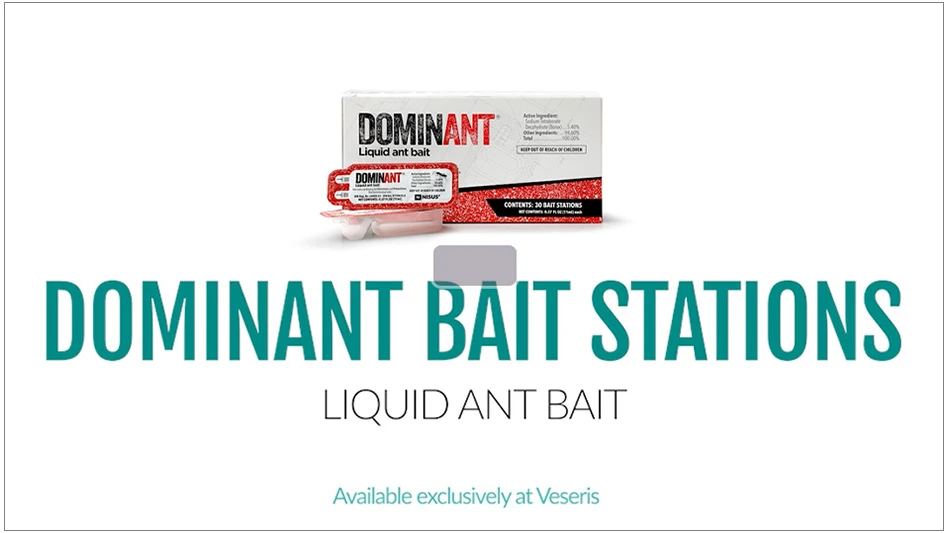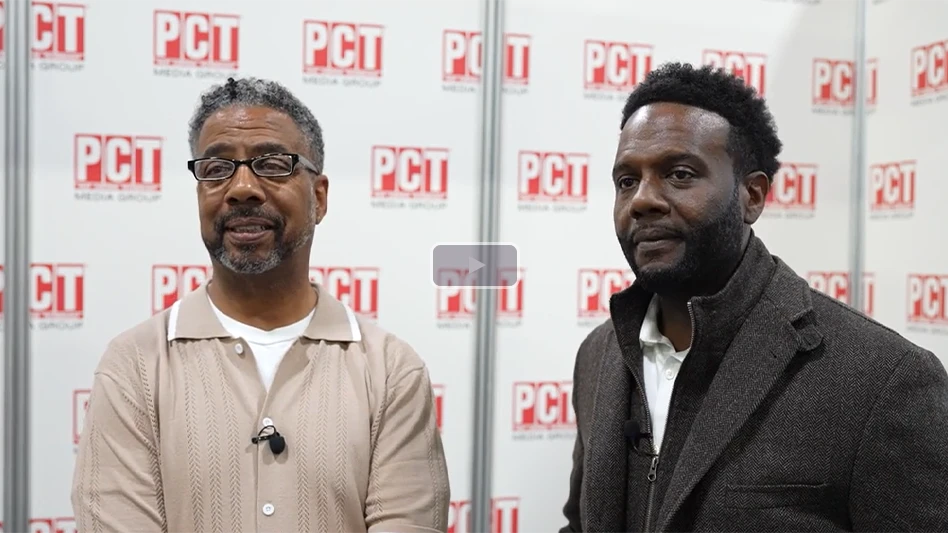Editor’s note: PCT magazine takes on the cutting-edge pest control topic of German cockroaches developing a behavioral resistance to gel baits in Stayin’ Alive, which appeared the January issue. PCT provides comprehensive coverage of this topic with perspectives from researchers, PCOs, technical managers and others. This latest cockroach management challenge should come as no surprise to the pest control industry. Cockroaches have proven to be the ultimate adaptors. PCT has covered the changing face of cockroach control throughout the years. The following article titled “Cockroach Resistance” appeared in the October 1987 issue of PCT. Find out how cockroaches were adapting to the pest control industry’s treatment techniques in the pre-baiting days.
There’s good news and bad news on the cockroach resistance front. First, the bad news – PCOs shouldn’t expect a “cure-all” chemical to come on the market that is immune to cockroach resistance problems. “Resistance is something that’s going to happen no matter what we do,” says Dr. Donald Cochran, Head of the Entomology department at Virginia Polytechnic Institute and State University. In fact, even the highly touted, second generation synthetic pyrethroids – originally hailed as a replacement for older industry compounds – have begun to show signs of resistance in field strains of cockroaches. If used heavily and repeatedly, Cochran says, it will only be another two to three years before pyrethroids begin to develop resistance problems.
Nonetheless there is some good news. According to the Virginia-based entomologist, resistance is not going to defeat the professional pest control operator. Through all of his laboratory and field experience, Cochran has yet to come across a cockroach strain that cannot be controlled by some chemical or another. “One of the positive factors in this whole picture,” he says, “is that even though we’ve been using diazinon, chlorpyrifos, and some of the other organophospate pesticides (excluding malathion) intensively since 1960, we still have pretty good control. That tells me that the potential for developing high level resistance in these compounds just doesn’t seem to exist in the German cockroach.
MECHANISMS OF RESISTANCE. While resistance is a natural phenomenon in insect populations, it’s a problem that can be overcome in most cases, according to Cochran. PCOs themselves have the power to curb the development of resistance by the selecting the proper chemicals and application techniques for a particular job. Chemical manufacturers also can help out by producing pesticides that “short circuit” potential resistance problems in insects before it becomes a serious problem.
The success or failure of a pest management program, particularly as it relates to resistance, depends largely on the factors of resistance that are present in an insect population.
“It’s essential to identify the mechanisms of resistance in a particular problem,” says Richard Gouger, Biological Group Manager for ICI of Americas Inc., “because then you can develop an integrated pest management program that addresses those concerns.”
Gouger discussed the issue of resistance at a Synthetic Pyrethroids Symposium sponsored by ICI Americas earlier this year, citing six different mechanisms of insect resistance, as well as ways to combat them.
The first mechanism to consider is reduced penetration. Insects have the uncanny ability to resist the penetration of certain chemicals into their cuticle (the outer covering of an insect’s body.)
“The potential for overcoming this phenomenon involves the use of surfactants or abrasives such as silica gel.” This abrasive actions softens or breaks down the cuticle, Gouger explains, making it easier for the chemical to penetrate the insect’s body.
Increased excretion is yet another factor that contributes to the onset of resistance in a cockroach population. “That’s where the chemical gets into the insect’s body, but it develops ways to excrete the compound before the toxicant has a chance to work,” Gouger says.
This biological phenomenon can be overcome by adding synergists to various formulations of insecticides, thereby increasing the killing power of the compounds. “If the chemical is made to work faster,” he explains, “then the insect doesn’t have as long to excrete it before it takes effect.”
Synergists, such as piperonyl butoxide, also have proven effective when the PCO is confronted with various other mechanisms of resistance, most notably that of increased metabolism.
Similar to the excretion phenomenon discussed earlier, increased metabolism occurs when an insect is able to break down a pesticide before it acts on the target site. Although not completely understood, enzymes within an insect’s body are able to destroy the toxic properties of insecticides, thereby enabling the insect to survive. Formerly, synergists have been particularly effective in overcoming this type of resistance problem.
“The synergist interferes with the enzymes that enable the insect to survive,” notes Gouger. “It basically ties them up, giving the chemical a chance to do its job.”
Synergists are also useful in fighting another mechanism of reistance – enhanced storage of body fats. “It’s similar to the problem of excretion,” Gouger explains. “Insects have the uncanny ability of being able to store pesticides in their fat bodies, where the toxicant can’t really doesn’t have much of an effect on them.”
If the pesticides are held up in these storage areas for an extended period of time, the enzymes within the insect’s body have a chance to break down the pesticide, resulting in poor control.
In addition to genetic factors within insects, a large part of the resistance problem may revolve around behavioral avoidance. For example, Gouger explains, if an insect population is subjected to “chemical pressure” in a given harborage, it will shift by genetic selection to a different environment. “They change their habits,” he says. “and select different areas to live in if they’re exposed to pesticides on a regular basis.”
This is particularly true in agriculture. “In cotton, for example, moths will lay their eggs in parts of the plant that have never been exposed to pesticides,” Gouger says. The same is true of cockroaches. If only baseboards are being treated in an account, cockroaches will frequently move away from these locations and into ceiling voids, cracks and crevices and walls, and other pesticide-free environments.
Gouger says some PCOs may be unintentionally selecting for resistance by routinely fogging structures or spraying baseboards, rather than treating cracks and crevices and other out-of-the-way harborage sites. By varying his application program within an account, the PCO can reduce the chances of this type of resistance problem from developing.
While PCOs and chemical manufacturers have the means to successfully address the aforementioned mechanisms of resistance, there is one that still baffles the scientific world – nerve-site insensitivity. “This is particularly difficult to deal with,” Gouger says. “because we don’t know enough about this phenomenon to overcome it.”
Nerve-site insensitivity impacts pesticides that effect the central nervous system (synthetic pyrethroids, chlorinated hydrocarbons, etc.) “There are certain target sites that these compounds attack when they enter the insect,” Gouger says. “but apparently insects have the ability to alter these sites. And once they reduce the number of target sites available, the insecticide is not as effective.” Ongoing research is currently being conducted to determine the exact causes of this phenomenon.
THE PCOS ROLE. While entomologists continue to study the marvels of nerve-site insensitivity in search of possible solutions, the structural pest control industry must continue to educate itself about the factors that influence resistance.
Obviously, the PCO can do little about the genetic or biological factors present in an insect population. However, they can do something about the man-made factors that contribute to the problem of resistance.
“First, you’ve got to look at the chemical you are using,” Gouger says. “If you have a material that’s very persistent and you’re constantly exposing an insect population to it, you increase the potential for resistance. You’re making the entire population susceptible to resistance by pressuring it over a long period of time.”
The PCO also has to consider the pesticide formulation(s) and application techniques he’s used in the past. ‘Are you killing 99 percent of the insects or 50 percent?” asks Gouger. If a PCO is haphazard in his treatment techniques, he may be applying sublethal doses of chemical, a primary factor in insect resistance.
Rather than contributing to the resistance problems, PCOs need to learn how to manage the monster. Gouger has three recommendations – management by moderation, management by saturation and management by multiple attack.
“Management by moderation means being selective in the amount of chemical you use,” he says. “You’ve got to use low dosages, make less frequent applications and use chemicals that re not very persistent in their environment,” In other words, don’t overuse a chemical by spraying it in the same account month after month after month.
Management by saturation is more risky than other treatment techniques, according to Gouger. It consists or applying chemicals at a rate that will kill 100 percent of the insect population. Unfortunately, the odds are great that a PCO will build a “super strain” of roaches with this type of treatment regimen.
Gouger, like many other industry specialists, advocates management by multiple attack – utilizing a variety of chemicals to control the target population. “Use several groups of chemicals that don’t have the same mode of action,” he recommends.
Management by multiple attack is another name for integrated pest management. By improving the sanitation in an account, rotating your chemicals, and treating the premises thoroughly, PCOs can make it more difficult for insects to become immune to the affects of any one pesticide. By doing a thorough job and using all the tools available in the pest control industry, insecticide resistance need not be a serious problem for the pest control professional.

Explore the January 2003 Issue
Check out more from this issue and find your next story to read.
Latest from Pest Control Technology
- Envu Announces Lichtenstein as Chairman of Board of Directors
- Spider Expertise, Cockroach Species, AI Tools for Disease Transmission Hot Topics at Purdue Conference
- Rose Pest Solution Promotes Kandler to District Manager of Columbus (OH) Office
- Webinar: Maximizing Cash Flow — Key Strategies for Business Growth
- WorkWave Announces Wavelytics
- Rising Rat Populations Linked to Warming Temperatures, Urban Growth, Study Finds
- How Might the 2024 Elections Impact PCOs
- Keeping Track of Termite Identification





